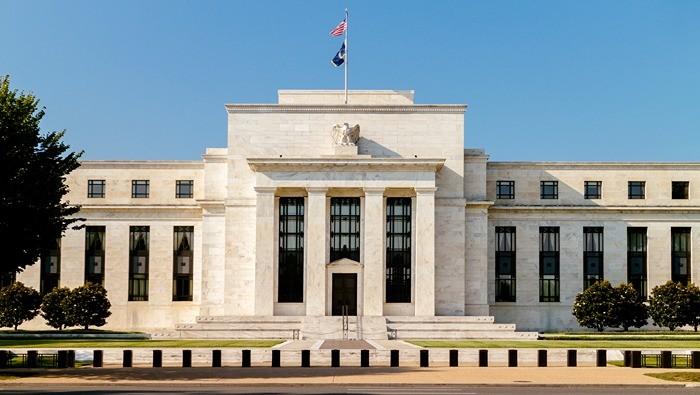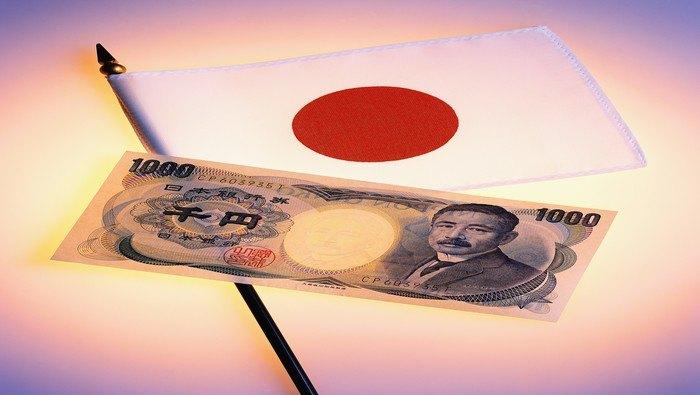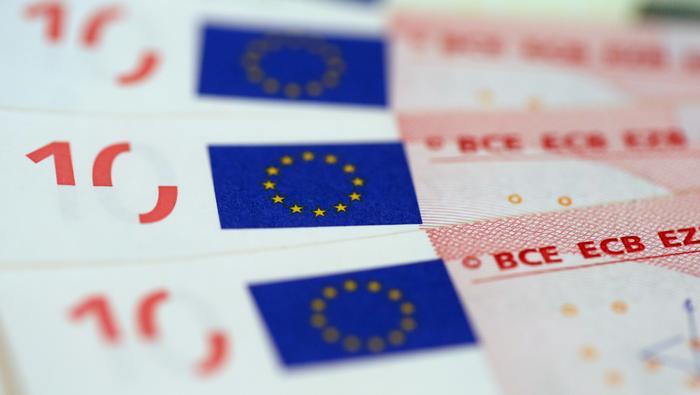2024-05-02 12:00
Crude Oil Price and Analysis US Crude oil benchmark prices have stopped falling at their uptrend line The $79 level remains in play as the level at which the Washington may like to buy Apart from this the market is short of near-term positives Crude oil prices got a lift on Thursday, reportedly on expectations that the United States could buy near current levels to replenish its Strategic Reserve. The Reserve was depleted by an historic sale back in 2022 and Washington doesn’t want to pay any more than $79/barrel to top it up. The US crude market isn’t far from that point now. Support from this quarter came none too soon for a market short of positives. Prices were knocked this week by news of sharply rising US stockpiles and the prospect of a ceasefire between Israel and Hamas in Gaza. The Federal Reserve didn’t help oil bulls’ cause on Wednesday. It left borrowing costs alone, as was expected, but continued to worry aloud about the resilience of inflation. Now markets which had expected interest rate cuts to begin in the first quarter of this year will count themselves lucky if they see one by the fourth. Of course, the economic resilience that has prompted the Fed’s caution is hardly in itself bad news for oil demand in the world’s largest economy. But such is the link between credit costs and everything else that oil markets took a dive anyway. The major scheduled trading cue for oil this week will be much the same as for all other markets; the official US labor-market snapshot for April, released on Friday. It will include the headline non-farm payrolls count, with a chunky 243,000 gain expected. That or better will surely see rate-cut doubts increase further. Closer to the oil market, the Baker Hughs oil-rig count is also coming up on Friday. US Crude Oil Technical Analysis Learn how to trade oil with our expert guide - it's free US Crude Daily Chart Compiled Using TradingView The West Texas Intermediate benchmark price has bounced very close to the uptrend channel base which has been in place since early December. Before this week It hadn’t faced a serious test since February 5, but price action suggests that it remains relevant. It now offers support at $78.55 with a retracement prop at $77.68 lying in wait to catch falls below that mark. Bulls will want to get back above resistance provided by another retracement level at $80.21. This is quite close to the current market. A durable rise above that level will allow those bulls to contemplate taking back this week’s heavy falls, but they’ll need to top psychological resistance at $83.00 to do so. It will be fascinating to see whether the downtrend line from December 2022 can continue to cap the market. Prices have edged above that point this year but didn’t stay there for long. It now offers resistance at $82.45. --By David Cottle for DailyFX https://www.dailyfx.com/news/crude-oil-bounces-as-market-eyes-strategic-reserve-top-up-us-payrolls-20240502.html

2024-05-02 08:07
US Dollar, Gold, Japanese Yen Analysis and Charts Chair Powell plays down any US rate hikes. Yen surges on official buying before gains being to evaporate. Apple’s earnings and US Jobs Report are now key for sentiment. The Federal Reserve left interest rates unchanged last night, in line with market expectations, but announced that it would slow its pace of bond sales. Starting on June 1, the Fed will reduce the amount of US Treasuries it allows to roll of its balance sheet from $60 billion a month to $25billion, while $35 billion of mortgage-backed securities will continue to mature. At the post-FOMC decision press conference Chair Powell suggested that rate cuts are still on the table if inflation slows further and that it was unlikely that the Fed would raise interest rates. The mildly dovish outtake from yesterday’s FOMC has buoyed risk markets in early turnover, although a sustained follow-through is unlikely with the latest US Jobs Report (NFP) set for release on Friday at 13:30 UK. Recently announced US JOLTs data disappointed the market as job openings fell to a three-year low. In the equity space, Apple and Coinbase are among a clutch of US companies announcing their latest earnings today. Keep informed of all earnings releases with the DailyFX Earnings Calendar The US dollar fell post-FOMC and is back in a potential bullish flag structure made over the last two weeks. US Dollar Index Daily Chart The US dollar also came under pressure after heavy buying of the Japanese Yen sent USD/JPY tumbling from a high of 158.00 to around 153.00. The effect of the buying, heavily rumored to be the Bank Of Japan, however, dissipated fairly quickly as USD/JPY moved back into the mid-155s. Learn how to trade USD/JPY with our expert guide USD/JPY Daily Price Chart Gold picked up a bid on the back of a weaker dollar and lower US Treasury yields. The precious metal slipped to support around the $2,280/oz. level, before moving higher, but yesterday’s move does not look convincing, especially ahead of tomorrow’s US NFPs. Short-term resistance at $2,342/oz. – trend and 20-day sma – while $2,280/oz. should hold until tomorrow’s Jobs Report. Gold Daily Price Chart All charts using TradingView IG Retail Sentiment 53.94% of traders are net-long with the ratio of traders long to short at 1.17 to 1.The number of traders net-long is 10.91% lower than yesterday and 7.70% lower than last week, while the number of traders net-short is 4.01% higher than yesterday and 0.42% lower than last week. We typically take a contrarian view to crowd sentiment, and the fact traders are net-long suggests Gold prices may continue to fall. Are you risk-on or risk-off ?? You can let us know via the form at the end of this piece or contact the author via Twitter @nickcawley1. https://www.dailyfx.com/news/market-update-us-dollar-gold-japanese-yen-on-the-move-apple-earnings-and-nfps-next-20240502.html

2024-05-02 02:05
Most Read: Fed Keeps Rates Steady, Grows Cautious on Inflation; Gold, USD, Yields Await Powell The U.S. dollar, as measured by the DXY index, sank more than 0.6% on Wednesday, pressured by falling U.S. yields in the wake of the Federal Reserve's monetary policy decision. For context, the U.S. central bank left borrowing costs unchanged in their current range of 5.25% to 5.50% and retained its previous forward guidance despite rising inflation risks. Regarding the quantitative tightening program, the Fed announced it would significantly curtail the scheme by which it is shrinking the size of its portfolio of assets. Starting next month, the amount of Treasuries allowed to roll off the balance sheet when they mature will be cut from $60 billion to $25 billion. This came as a surprise, with many bond dealers expecting a smaller taper. Focusing on the policy statement, the document added a hawkish acknowledgment of the “lack of further progress” on disinflation, but Chair Powell's subsequent press conference struck a more dovish tone. Many traders initially believed that the FOMC chief would come out swinging after the string of unfavorable CPI, PPI and core PCE readings in 2024, but he failed to embrace a more aggressive stance. Want to know where the U.S. dollar may be headed over the coming months? Explore key insights in our second-quarter forecast. Request your free trading guide now! While Powell did highlight a high threshold for easing and noted that it would probably take longer than initially envisioned to pivot to a looser stance, he made it sound like the bar for resuming hiking borrowing costs is even higher. Some traders, who had been predicting that rates might rise again, were caught on the wrong side of the trade after this assessment. With the Fed failing to embrace a hawkish posture at its last gathering, government bond yields will struggle to extend their recent rally, removing a bullish catalyst from the U.S. dollar. This does not mean that interest rates will start correcting lower imminently, but rather that their upside potential may be limited going forward. Against this backdrop, the U.S. dollar could trade sideways or with a slightly negative bias in the near term, although its prospects will also depend on the relative stance of other key central banks, such as the ECB and the Bank of England. EUR/USD FORECAST - TECHNICAL ANALYSIS EUR/USD rallied on Wednesday, edging closer to reclaiming overhead resistance at 1.0725. Bears must staunchly defend this ceiling to thwart the momentum from picking up; a failure to do so might trigger an advance towards 1.0755. With continued strength, the focus will shift to the 1.0800 mark. In the event of a market retracement, support is projected to emerge close to the 1.0700 mark, followed by this week's swing low near 1.0645. Looking further down, April's trough near the 1.0600 psychological threshold will be the next area of interest for the bearish camp. EUR/USD PRICE ACTION CHART EUR/USD Chart Created Using TradingView GBP/USD FORECAST - TECHNICAL ANALYSIS GBP/USD gained ground on Wednesday, pushing past 1.2515 but falling short of clearing trendline resistance and the 200-day simple moving average at 1.2550. Traders should watch this technical zone closely, keeping in mind that a breakout could result in a rally towards a Fib ceiling at 1.2590. On the flip side, if sentiment shifts in favor of sellers and prices head back below 1.2515/1.2500, support is expected to materialize around 1.2430. To stave off a more pronounced selloff, bulls must tenaciously protect this floor; any lapse could precipitate a swift market downturn towards 1.2305. GBP/USD PRICE ACTION CHART GBP/USD Chart Created Using TradingView https://www.dailyfx.com/news/forex-usd-dollar-outlook-post-fed-decision-eur-usd-gbp-usd-technical-analysis-20240502.html

2024-05-01 18:10
FOMC DECISION – APRIL 30- MAY 1 MEETING The Fed holds interest rates steady at the end of its April 30-May 1 meeting, in line with expectations Forward guidance in the FOMC statement remains unchanged but the inflation characterization was tweaked Gold and the U.S. dollar have consolidated their pre-announcement bias as traders await Powell’s presser Most Read: S&P 500 Trade Setup - Bearish Reversal in Play ahead of Confluence Resistance The Federal Reserve on Wednesday kept borrowing costs unchanged in a range of 5.25% to 5.50% after ending its April 30-May 1 gathering, just as expected. The decision to stand pat for the sixth straight meeting, taken unanimously, is part of the current strategy of allowing restrictive monetary policy to work through the financial conditions channel to ease demand in pursuit of lower consumer price growth. Two years ago, the Fed initiated one of its most aggressive hiking campaigns in decades to tackle red-hot inflation, delivering 525 basis points of rate increases in the process. While these measures have succeeded in curbing the skyrocketing cost of living, progress on disinflation has faltered in 2024, with core PCE running at a 4.4% annualized rate over the past three months, more than double the target. On quantitative tightening, the Fed announced plans to start tapering in June the program by which it gradually reduces its balance sheet. According to the details, the monthly pace of runoff will be cut from $60 billion to $25 billion for Treasury securities, but the existing cap on agency mortgage-backed securities will stay the same for now. Focusing on the policy statement, the central bank maintained a constructive view of the economic outlook, acknowledging that activity has been expanding at a solid pace and that the unemployment rate remains low amid strong job creation. Meanwhile, the FOMC noted that consumer prices have eased over the past year, but warned that progress on disinflation has hit a snag, signaling mounting concerns regarding upside inflation risks. In terms of forward guidance, the committee stated that it “does not expect it will be appropriate” to dial back on policy restraint “until it has gained greater confidence that inflation is moving sustainably toward 2%”. This echoes the message conveyed in March and signals little appetite to pivot to a looser stance soon, possibly implying that the first-rate cut of the cycle may not occur until September or December. MARKET REACTION AND IMPLICATIONS No fresh macroeconomic projections emerged from this meeting; the next batch is scheduled for June, but Powell is likely to provide further clarity on the central bank's forthcoming actions during his press conference. Meanwhile, gold and the U.S. dollar have consolidated their pre-announcement bias after seesawing a little bit, but with price swings largely contained. Volatility, however, could pick up once Powell starts speaking at 2:30 pm ET. US DOLLAR, YIELDS AND GOLD PRICES CHART Source: TradingView https://www.dailyfx.com/news/fed-keeps-rates-grows-cautious-on-inflation-gold-us-dollar-yields-await-powell-20240501.html

2024-05-01 13:30
Japanese Yen (USD/JPY) Analysis and Charts USD/JPY inches up in a market fixated on what the Fed will have to say This week’s roller-coaster ride has calmed down However, the Yen remains under pressure The Japanese Yen was lower again against the United States Dollar on Wednesday after what’s already been a wild ride for the currency this week. If, as looks increasingly likely, Japan’s Ministry of Finance intervened in the foreign exchange market on Monday to counter Yen weakness, it hasn’t bought a lot of respite. Although Tokyo has not so far confirmed or denied any action, wire reports based on money market data suggest that as much as $35 billion could have been spent to prop the Yen up. Various important speakers had previously suggested that the Dollar’s sharp rise against the local unit has been too fast and at odds with market fundamentals. But with expectations of when US interest rates might fall pushed further and further back, the Yen’s ultra-low yields are simply not tempting. They’re unlikely to be for some time to come, too, even as the Bank of Japan has suggested that rates could rise much further in response to a durable rise in inflation. For now, of course, all this matters less than what the Federal Reserve will do later on Wednesday’s global session. The US central bank is not expected to do anything to borrowing costs this time around, but the extent to which it confirms market expectations that rates could still fall around the end of the third quarter will be key. The US economy remains perhaps surprisingly resilient. So the chance that rate cuts will be pushed yet further out is certainly still in play. If seen, this would only support the Dollar further and provide further headaches for the Japanese authorities. USD/JPY Technical Analysis USD/JPY Daily Chart Compiled Using TradingView Learn how to trade USD/JPY with our expert guide The uptrend in place since the start of this remains dominant and, even despite Monday’s huge falls, USD/JPY is still above the upper boundary of its channel. Unsurprisingly, however, the market is starting to look overbought and perhaps a little short of momentum now, and it would not be a surprise to see the rate retreat into that band. It now offers support at 157.26. USD/JPY has moved far above its 50-, 100 and 200-day moving averages and, on that basis alone, some consolidation is probable. Naturally traders will now be on watch for any signs that the Tokyo authorities are stepping in whenever the market gets up toward 160.00. However, while suspicions of that might stop sudden upside spikes, it seems unlikely to stop this bullish market getting there in due course anyway. Reversals back into the former trading band could find support at 156.1. That’s the top of a narrower, better-respected, and possibly more meaningful uptrend. It’s also very close to where the market ended up at the end of Monday’s wild ride. -By David Cottle for DailyFX https://www.dailyfx.com/news/japanese-yen-ticks-lower-again-as-market-looks-past-intervention-jitters-to-fed-20240501.html

2024-05-01 10:07
Euro (EUR/USD) Analysis and Chart The Euro is struggling against a resurgent US dollar as rate-cut expectations between the two continue to widen. Today’s FOMC may underpin thoughts that the Fed is comfortable with rates staying higher for longer. No policy change is expected but the post-FOMC press conference may give some much-needed clarity. A bearish flag formation is pushing EUR/USD back toward a multi-month low. Today’s FOMC meeting is expected to see all policy dials left untouched as higher-than-forecast US inflation hampers the central bank’s plan to start cutting interest rates. Current market forecasts show the first 25 basis point cut will probably happen in November, with a growing likelihood that one rate cut will be it for this year. The post-decision press conference will give Chair Jerome Powell to give his latest thoughts on the economy, although he is unlikely to give any forward guidance on when rate cuts can be expected. A neutral-to-hawkish tone can be expected from Chair Powell, reiterating a data-driven approach to upcoming monetary policy. After the press conference, Friday’s US Job Report will become the next market focal point before the weekend. Learn how to trade news events with our expert guide EUR/USD remains in a longer-term downtrend and the daily chart is showing a new, negative, candlestick formation. A second bearish flag formation is forming with trend support now broken, while an attempt to break above the 20-day simple moving average has failed. This leaves EUR/USD looking at lower prices with a break below the April 16 low of 1.0601 leaving 1.0512 the next level of interest. A break below the 1.0601 low will also continue a series of lower highs and lower lows that started at the end of last year. A bearish flag is a technical analysis pattern that is considered a continuation pattern in a downtrend. It is a type of chart formation that typically occurs after a steep decline in price, followed by a period of consolidation, which resembles a flag-like shape on the chart. This pattern is used by traders to identify potential selling opportunities and to anticipate a continuation of the existing downtrend. The formation of a bearish flag consists of two main parts, the flag pole - the initial sharp downward price movement that precedes the formation of the flag, and the flag – where the price action consolidates and forms a smaller, rectangular or parallel pattern. Traders can use bearish flag formations as continuation signals, entry points, and as a risk management aide. EUR/USD Daily Price Chart Retail trader datashows 61.29% of traders are net-long with the ratio of traders long to short at 1.58 to 1.The number of traders net-long is 10.83% higher than yesterday and 6.26% higher than last week, while the number of traders net-short is 6.83% lower than yesterday and 10.61% lower than last week. We typically take a contrarian view to crowd sentiment, and the fact traders are net-long suggests EUR/USD prices may continue to fall. What is your view on the EURO – bullish or bearish?? You can let us know via the form at the end of this piece or you can contact the author via Twitter @nickcawley1. https://www.dailyfx.com/news/euro-latest-outlook-bearish-technical-signal-halts-eur-usd-ahead-of-fomc-decision-20240501.html
